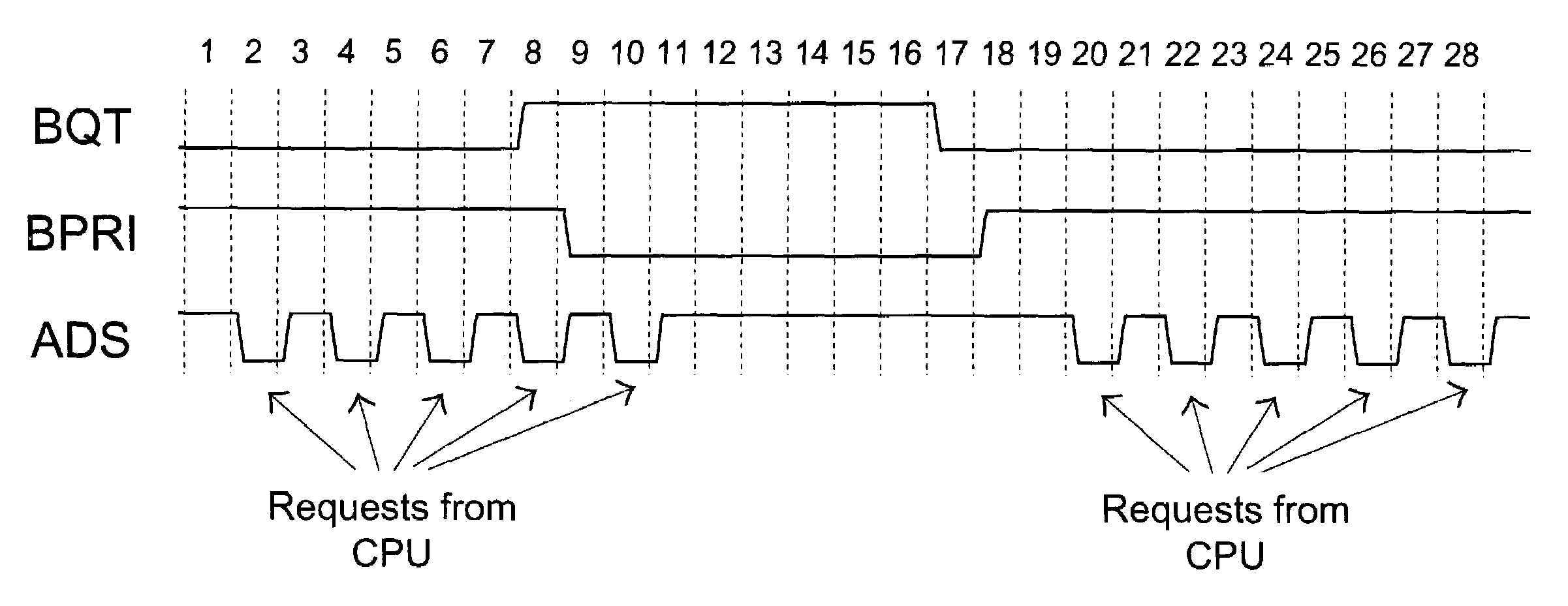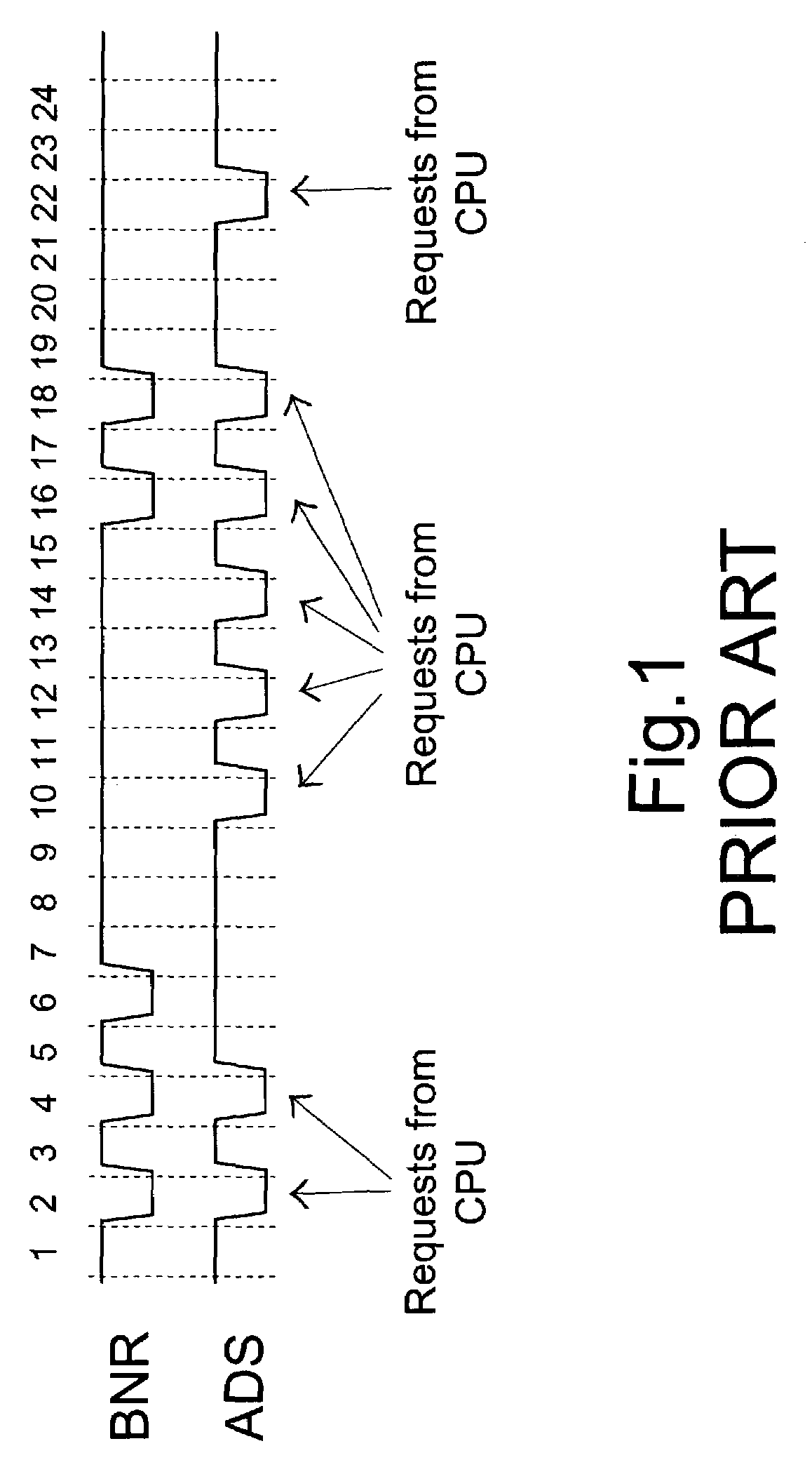Method for blocking request to bus
a request and bus technology, applied in the direction of unauthorized memory use protection, instruments, climate sustainability, etc., can solve the problems of cpu and control chip inability to receive any further requests, power consumption of bnr signal drive circuit, and limited processing capacity of cpu and control chip for processing requests
- Summary
- Abstract
- Description
- Claims
- Application Information
AI Technical Summary
Benefits of technology
Problems solved by technology
Method used
Image
Examples
Embodiment Construction
[0020]The present invention will now be described more specifically with reference to the following embodiments. It is to be noted that the following descriptions of preferred embodiments of this invention are presented herein for purpose of illustration and description only; it is not intended to be exhaustive or to be limited to the precise form disclosed.
[0021]In general, a CPU is designed with a unidirectional bus priority signal line, which is for example referred to a BPRI signal line, in order for a control chip to output a timely request to the CPU. The request, for example, may be a snoop of an I / O device or a defer reply. The unidirectional bus priority signal line is provided for preventing from the efficiency reduction of the control chip, resulting from the exclusive occupation of the front side bus by the CPU for a long term.
[0022]FIG. 2 schematically illustrates the conventional operation principle on the BPRI signal line. At Cycles 1 and 3, the CPU outputs respective...
PUM
 Login to View More
Login to View More Abstract
Description
Claims
Application Information
 Login to View More
Login to View More - R&D
- Intellectual Property
- Life Sciences
- Materials
- Tech Scout
- Unparalleled Data Quality
- Higher Quality Content
- 60% Fewer Hallucinations
Browse by: Latest US Patents, China's latest patents, Technical Efficacy Thesaurus, Application Domain, Technology Topic, Popular Technical Reports.
© 2025 PatSnap. All rights reserved.Legal|Privacy policy|Modern Slavery Act Transparency Statement|Sitemap|About US| Contact US: help@patsnap.com



